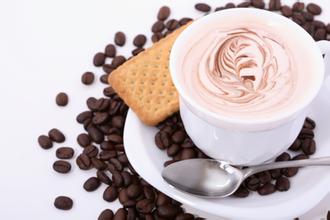Java, the earliest coffee growing area in Indonesia, introduces Lindong, Sumatra.
Jakarta, the capital of Indonesia, is located in the northwest of Java Island and is the largest city in Southeast Asia. In addition, Indonesia's second and fourth largest cities are located on Java Island.
Java was the first region in Indonesia to grow coffee and dominated the world coffee market as early as the 18th century. The famous Javanese mocha, a blend of Javanese coffee and Yemeni mocha, represents an era of coffee impressions. In addition, there is classic monsoon coffee Moosooned-coffee, or aged coffee.
Coffee cultivation on Java Island was initially carried out on large farms, established by Dutch colonists in the 18th century, and gradually transformed into small farmers through World War II and many changes. Good Java coffee usually comes from five existing large farms. Although Java coffee production accounts for only about 10% of Indonesia's total coffee production, it is an important component of Indonesia's fine coffee.
The main coffee producing area of the island is located in the Ijen Plateau, in the Ijen Highlands region around Ijen Volcano.
Java coffee is traditionally washed.
Indonesian Coffee: Main Producing Areas
Topographic map of Java Island
Sulawesi Coffee
Sulawesi, formerly known as Celebes, is also known as Celebes Coffee.
The most famous is Toraja, or Tornaga, Toraja.
Toraja coffee is produced in Tana Toraja district of South Sulawesi province, named after the local Toraga people. Tana Toraja is located about 300 kilometers north of Makassar, the provincial capital, and is a well-known tourist destination in Indonesia.
Initially Sulawesi coffee industry mainly supplies the Japanese market, Japanese businessmen established the initial coffee industry in Sulawesi Island.
Traditional coffee processing methods are wet planing, Giling Basah, wet-hulled

Important Notice :
前街咖啡 FrontStreet Coffee has moved to new addredd:
FrontStreet Coffee Address: 315,Donghua East Road,GuangZhou
Tel:020 38364473
- Prev

Introduction of Central American Honduran coffee beans with good flavor, rich and mellow, suitable for mixed drinking
High-quality coffee in Honduras uses water washing to deal with coffee beans, usually after soaking, when the defective fruit will surface, it can be discarded first. Then put the good fruit into the fruit peeling machine and peel off the peel with the rotating force of the machine. Peeled fruits are screened by machines to select fruits of high quality. Usually the bigger the fruit.
- Next

Introduction to the Export of Niya Coffee the Central Mountain region of Nyeri Ethiopia
The increase in the number of Niya coffee is obvious. From 1969 to 1970, 800000 bags were exported, and from 1985 to 1986, the export volume increased to 2 million bags. Production is now stable at 1.6 million bags, with an average yield of about 650kg per hectare. The average price of coffee in Kenya has been rising before the price of coffee has skyrocketed in recent years. Prices from 1993 to 1994 were 50% higher than they were 12 months ago.
Related
- Does Rose Summer choose Blue, Green or Red? Detailed explanation of Rose Summer Coffee plots and Classification in Panamanian Jade Manor
- What is the difference between the origin, producing area, processing plant, cooperative and manor of coffee beans?
- How fine does the espresso powder fit? how to grind the espresso?
- Sca coffee roasting degree color card coffee roasting degree 8 roasting color values what do you mean?
- The practice of lattes: how to make lattes at home
- Introduction to Indonesian Fine Coffee beans-- Java Coffee producing area of Indonesian Arabica Coffee
- How much will the flavor of light and medium roasted rose summer be expressed? What baking level is rose summer suitable for?
- Introduction to the characteristics of washing, sun-drying or wet-planing coffee commonly used in Mantenin, Indonesia
- Price characteristics of Arabica Coffee Bean Starbucks introduction to Manning Coffee Bean Taste producing area Variety Manor
- What is the authentic Yega flavor? What are the flavor characteristics of the really excellent Yejasuffi coffee beans?

